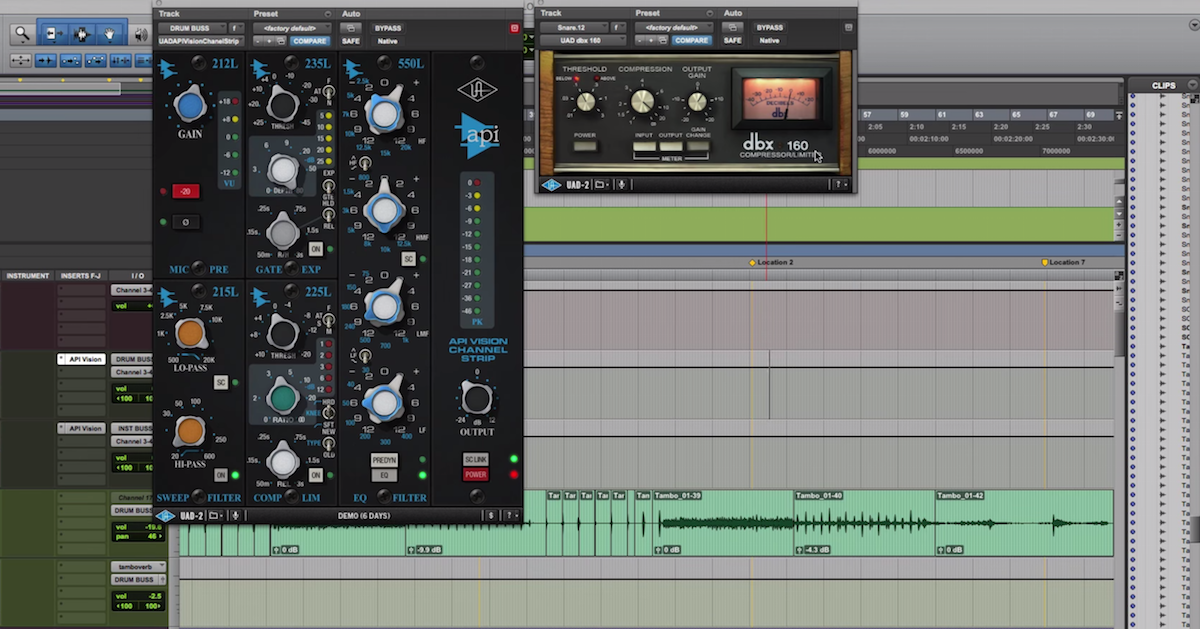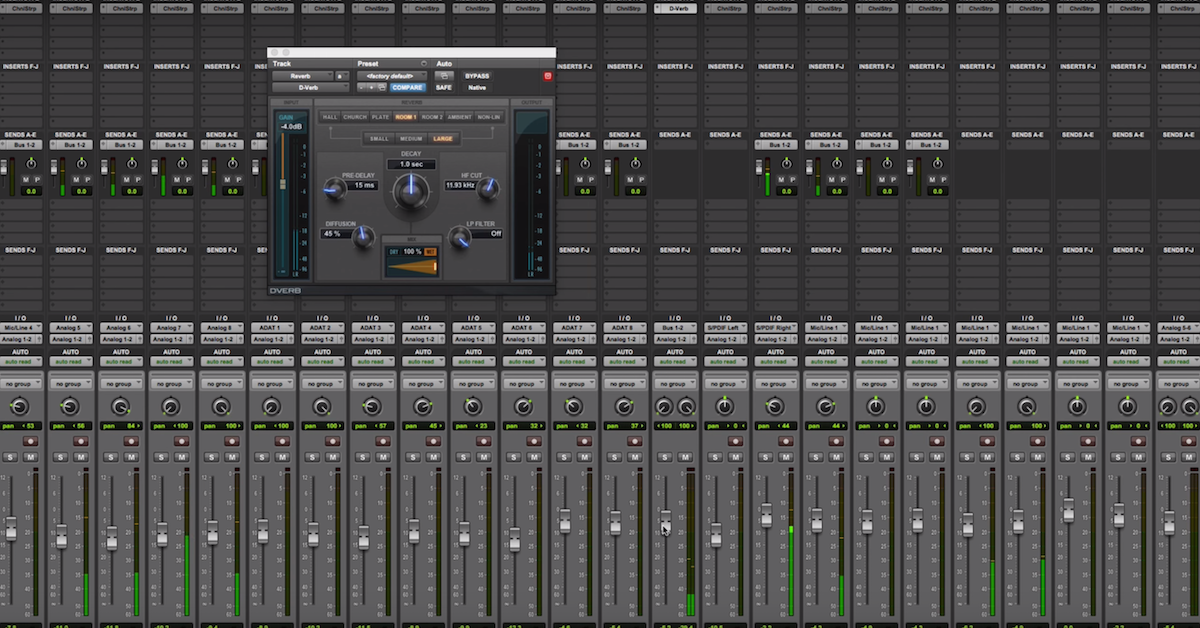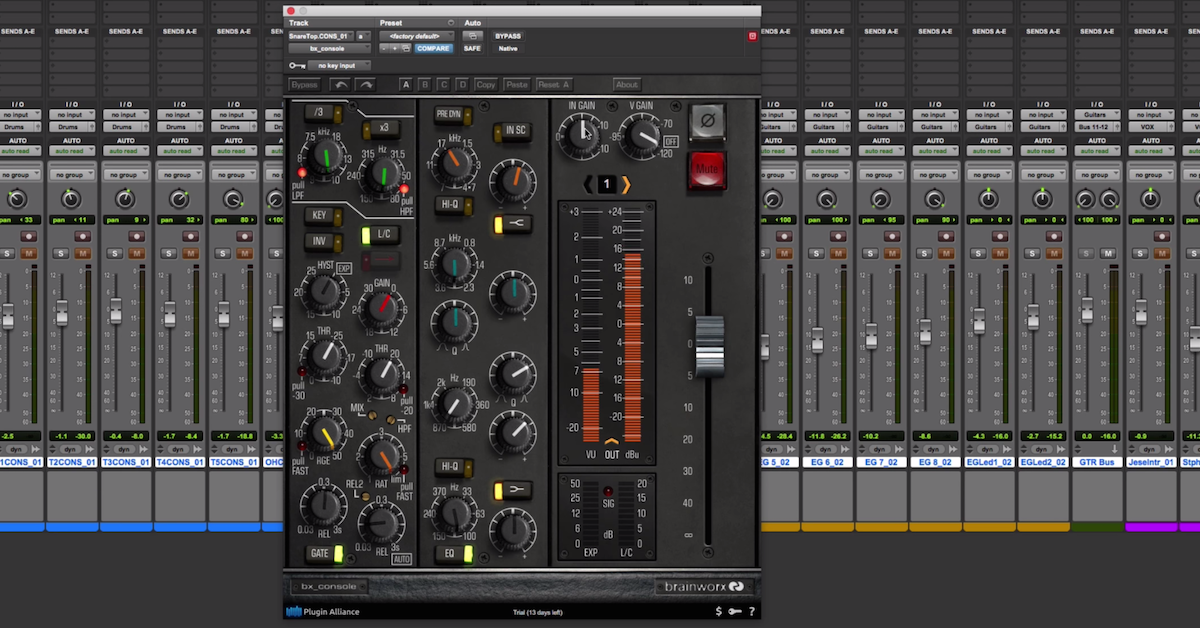Plugin Profiles: UAD Neve 1073 Preamp & EQ + AKG BX 20 Spring Reverb
In today’s plug-in profile, I’ll be introducing you to the UAD Neve 1073 preamp and equalizer, and AKG BX20 Spring Reverb.
With these plug-ins, I’ll be showing you how to give your track a vintage feel. Make sure to check out The Pro Audio Files for additional audio content, and if you’d like to skip ahead to hear these in action, feel free to do so.
Firstly, let’s take a look at the Neve 1073. We’ve got control over mic or line level input, a high shelf, which is at 12kHz, a mid-bell filter. We’ve got the ability to boost or attenuate at about 360 all the way up to 7,200. A low shelf. We have control over the frequency right here, and then a high pass filter.
Additionally, we have the ability to turn the EQ on and invert phase if we’d like.
Over here, we’ve got control over low or high impedance, which is very effective when using this in Unison with the Universal Audio Apollo preamps.
A 20dB pad, input fader, and output. And of course, the ability to turn the whole thing off or on.
So let’s take a listen to this electric guitar with the plug-in bypassed and with the guitar in context.
[mix, guitar with and without 1073 emulation]
Let’s bring in the Neve.
Solo it.
[guitar]
Definitely helps the guitar sit in its own space and cut through effectively.
So I’m going to fool around with these knobs and show you how I arrived at these settings, alright? So it might get loud. Let’s take a listen.
[guitar]
Ultimately, this is what I settled on. We’ve got this shelf, I did a little bit of cut, just to get rid of some high end. I am boosting a whole heck of a lot at 1.6kHz right here. Let’s take a listen to this filter.
[guitar]
1.6kHz always does a pretty decent job on guitars helping them come through. We’ve got again a pretty drastic boost here at 110 for the low shelf.
[guitar]
And we’ve got a high pass filter.
Let’s hear it without the EQ.
[guitar, no EQ]
Next we’ve got control over the low or high impedance, which is not going to make too much of a difference here.
[guitar, low and high impedance]
A pad, which is going to make a big difference.
[guitar, pad disengaged]
Great for level matching.
Then you can see right here that I did pretty drastic cutting at the output to make up for the fact that I’m doing a lot of boosting with the EQ.
I found that you can make really drastic changes without the EQ breaking up, and even when it does break up, it’s a pretty desirable sound. Show you how it performs on backup vocals.
We’ve got this giant stack of backup vocals here, so let’s make sure they’re selected and let’s take a listen in context without the Neve.
[mix]
Let’s bring it in.
Let’s solo these. Check it out.
[background vocals]
You really hear the airiness, the throatiness of the background vocals, and in context, it just really helps them cut through, which is already a really dense arrangement.
Let’s listen one more time with the Neve bypassed.
[mix, no Neve on background vocals]
Next up is the AKG BX20. I am using it on guitar. Let’s give you an introduction to the controls. We’ve got options for mono or stereo.
This direct button right here — the unit has its own sound to it. By enabling the direct right here, it sort of imparts its own character and adds some warmth and mid-range information to it.
We’ll take a listen a little bit later.
We’ve got controls over separate tanks, they have their own tone. EQ options, bass, low cut, and treble. These are extremely helpful. We’ve got a wet solo, so we hear nothing but the effect, or if we don’t want to solo the effect, we’ve got a dry/wet, in this case, I did want wet solo.
We’ve got pre-delay, and then we’ve got linkable or un-linkable decay time for left and right. Volume for left and right, and then pan, so what we’ve got going on here is I panned the reverb all the way to the right.
We’ve got this guitar that originates in the left channel, and then the reverb is applied, and we sort of have this ghostly wash of a reverb that helps the guitar sit within the mix, but also just sounds nice and more interesting.
Let’s take a listen without the AKG.
[guitar, no AKG reverb]
Let’s bring it in.
[guitar, with reverb]
Let’s experiment with the controls.
Definitely sounds a little bit more full with this direct option engaged, if that’s what you want.
Lastly, let’s take a listen to the AKG on backup vocals. I’ve got them soloed, let’s bypass the effect.
[background vocals, no AKG]
Let’s hear it with the reverb.
[background vocals with AKG]
Let’s hear it in context without the AKG.
[mix, no AKG]
And with the AKG.
[mix, with AKG]
I was definitely going for that Phil Spector wall of sound approach, where things are a little bit less defined than they would be in a modern recording, and I find that in addition to the sense of space the AKG helps you establish, because of the EQ and the different tanks and direct options, you have some real tonal options that you can work with, so it does a great job. It’s not your typical reverb.
Overall, I found these plug-ins to be a lot of fun, and they helped add a lot of character to my mixes. I used them on guitar and vocals, but the applications are really limitless. Whatever your imagination can think of.
If you have any questions, my name is Ian Vargo, I am with The Pro Audio Files, and make sure to check out the website for additional audio content. Thanks!






